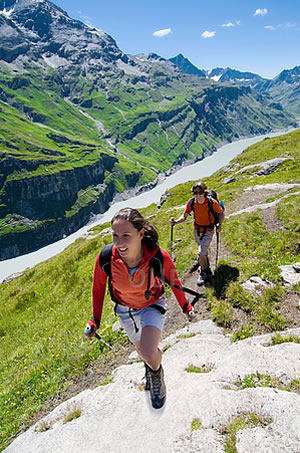
I’ve spent most of my life climbing mountains, first as an adventure-loving schoolboy, then later as a serious participant in a sport that has taken me all over the world. They’re an interesting phenomenon. They figure constantly in our lives, even if we don’t live near them, or contemplate ever climbing them. Advertising uses images of mountains constantly, and we refer to them without even realising it in our everyday language – I’ve got a mountain of work to do. You’re making a mountain out of a molehill.
They come, of course, in many sizes, and can be easy or difficult to climb because of that. Not unnaturally, the bigger they are, the harder they generally are to climb. It’s similar to learning languages, especially if we look at the process in terms of where we start from. Learning English if you are Dutch or German, isn’t as difficult as learning English starting from a first language like Japanese or Farsi, where you don’t even share the same alphabet.
But apart from absolute size, I’ve noticed that the shape of a mountain can strongly influence your chances of success, especially when you haven’t taken this factor into account. Even if two mountains have the same size, one can be more difficult than the other because of the ‘shape’ of the journey from the bottom to the top.
Some mountains, for example, are like the Matterhorn. Their shape is one of constant, challenging technical difficulty. I’m desperately trying to learn Polish at the moment, and this is the shape it has taken on for me. It has started steep and technical, and there is no indication that it’s going to get any easier. In fact, right now, I’m heading back down to base camp to rest and recover.
Other mountains are really steep to start with, but then they ease off, and if you’ve got over the first, very demanding section, you know that you’re going to make it to the summit. There’s a mountain very close to where I live here in Spain that has exactly this profile, and when I first climbed it, it was an incredible feeling to get halfway up and to realise that the worst was over.
It’s been like that for me with Spanish, as well. At first, with all the verb endings, the tenses, the masculine and feminine, and the (to an English speaker) bewildering subjunctive, it seemed as if I’d never get off the ground. And then suddenly it was happening, I was making progress (most of it upward), and the ground was receding into the distance. No one was holding my hand now. I’d become autonomous – using and learning, learning and using, but with the climb under control and the summit within my grasp.
There is a third mountain shape I’d like to describe because it concerns us a great deal when it comes to teaching English. It’s the mountain that is not too steep to start, and not too steep to finish, but that has a huge plateau area somewhere around the middle. A plateau is a large, flat area of high land. The highest summit in the Pamir mountain range of Central Asia, Ismoili Somoni Peak, has a very large plateau just over halfway up.
At 7495m high, Ismoili Somoni is a big mountain. But for most mountaineers, it’s not its size that makes it so difficult to climb. Rather it’s the plateau, which is wide and featureless, and takes a full day to cross. You can easily get totally lost on it if you’re not careful. Worse, still, although it’s taken a huge effort to get up to the plateau, the summit still feels a lifetime away.
For many learners of English, the intermediate plateau is equally huge. And different things can happen when they get there. A few will go on without any problem, and will finally reach their chosen goal. Others will abandon their attempt as soon as they spot the magnitude of the task ahead. Many, however, will struggle bravely, but not effectively, to get across the plateau, keen to get to the other side, but not sure how best to do so.
I actually failed to get across the plateau during my attempt at climbing Ismoili Somoni Peak. Nobody had told me about it, so mentally I wasn’t prepared for the work that was required of me. It was disappointing, but it didn’t stop me loving mountains, and in a life spent climbing them you have to learn to accept occasional failures.
But as an English teacher, I’m not happy if I see students struggling to get across their personal intermediate plateau, and I want to help them. I can’t carry them, of course. They still have to do all of the climbing. It’s them who have to put one step in front of the other and deal with the altitude. But what I can do is to guide them so that their efforts are rewarded with a real chance to tackle the summit. In my webinar on July 17th, we’ll be sharing ways of guiding our students across the plateau. It would be great if you could join me.